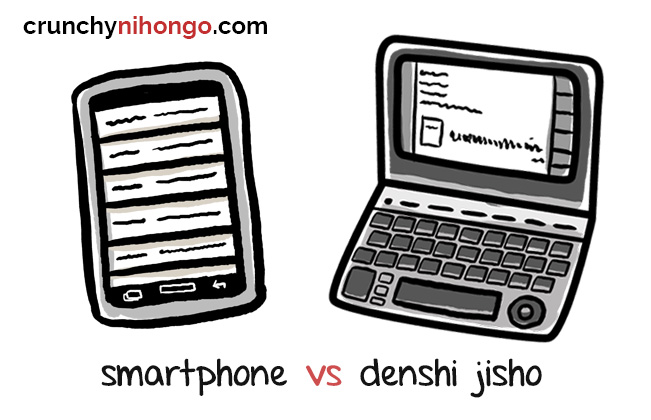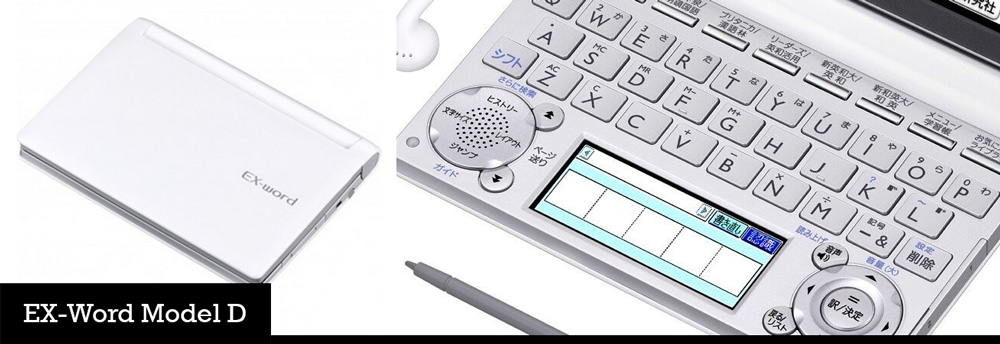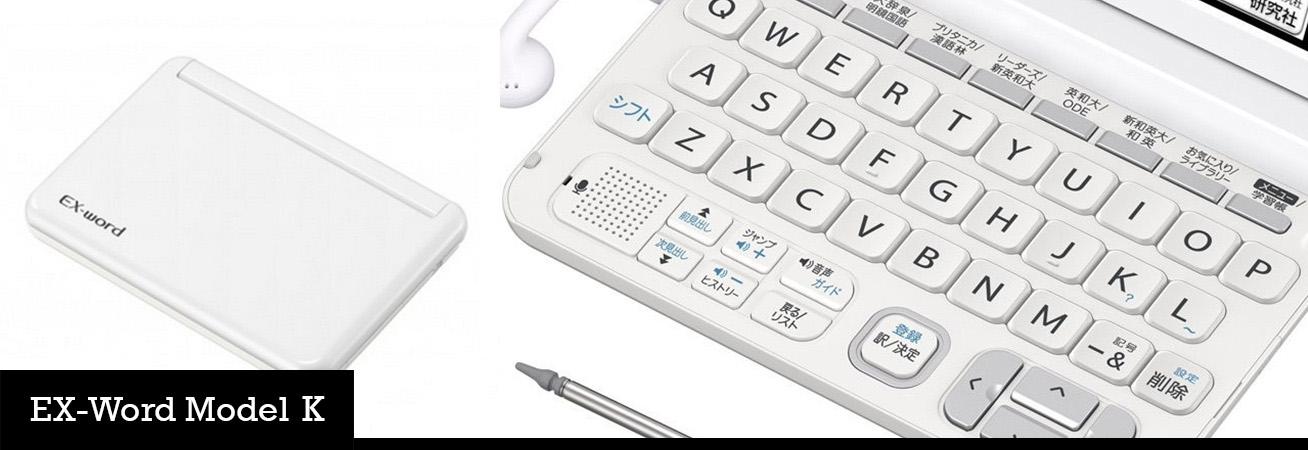Hi ! We hope this site helps you! ٩(ˊᗜˋ*)و As an Amazon Associate, we earn from qualifying purchases without additional cost. Click to read more about our Privacy Policy or Affiliate Disclosure
In case that you didn’t know, a Denshi Jisho is an electric dictionary to help you learn Japanese. Most people think it’s replaceable with free smartphone apps dictionary or google translate, but actually it is not… Let’s take a more in-depth look on what Denshi Jisho capable to do and if you need one.
Guide to decide if you need to buy one

There 2 questions below are the most frequently asked questions about Denshi Jisho. And hopefully, by the end of this article, you will be able to get answers to them.
• Do I need one ? What is the different between Denshi Jisho (electronic dictionary) and free smartphone dictionary?
• Which Denshi Jisho should I choose if I need one ?
So, do I need one?
First, if you just start learning basic Japanese, the answer would be NO, you don’t need one. A free smartphone dictionary apps and sites such as Tangorin or Jisho will be enough.
Why not?
Because the electronic dictionary (or called denshi jisho in Japanese) that you’re gonna buy is actually targeted for Japanese users to learn English. Therefore ALL the interface, except for the alphabetic keyboard, is written in Japanese. If you have no idea at all about Japanese, it will be a disaster to use it. And you will end up with a lot of headaches (and also heartaches, full of regret for ever buying this dictionary).
When and why will you need a Denshi Jisho ?
Only when you have learn a moderate amount of Japanese, especially mastering Hiragana & Katakana and able to search for kanji in your free smartphone apps, you will be able to navigate through the Denshi Jisho with not much trouble and headache.
A Denshi Jisho will be a very good and convenient tool to instantly search for the meaning of words you want to know. The best feature might be the good kanji handwriting recognition and the jump feature (to quickly jump from current words to other words you see in the description/screen).
So if you often read Japanese book or watching Japanese show, and you think it’s quite annoying to use your smartphone to look for words and you often need to google instead, you might need one.
Now if you think the electric dictionary is just to search for meaning of words, you might think that it is replaceable with a free smartphone app. But actually, an electric dictionary is more than that. Afterall, there must be a reason why professional translator/serious student or even a teacher in Japanese always have atleast one (yes, they have more than one) in their bag.

Functionality of a Denshi Jisho
The type of dictionaries in the Denshi Jisho is a thorough one. If you need basic words, you can easily google translate them. But if you’re translating a doctor conversation and want to search for a name of a condition/illness, a simple dictionary would not be able to do that. And a physical dictionary will not be convenient to use either due to the size and weight. That is why professionals need this kind of dictionaries. As a single electronic dictionary may pack about 15 kinds of dictionaries and much more.
As Japanese learners, you might not need the specialised dictionary but it can sometimes be useful if for example, the words you’re looking for turn out to be a name of an uncommon flower or animals.
And there are a lot of functions which can help you through your study. Such as :
• Highlighting & making notes (yes, you can make digital notes in these apps. Directly screenshot the screen, highlight and write your note on top of it)
• Making flashcard – not one like anki which have spaced repetition though, but it’s still have a nice system. You will be forced to try again until you’re good)
• Handwriting kanji recognition (write a kanji you don’t know, and get the meaning!)
• Real recorded Audio from native speaker that highlight some accent and unique pronunciation – Most apps use text-to-speech audio
• Super Jump function (ability to instantly search for another word in the description that you’re seeing) *the most useful function!*
*Note that not all Denshi Jisho are geared with functions listed above
Not to mention that these dictionaries have a long lasting battery (around 70 – 150 hours with 2AA battery) and their speed to search for the meaning of a word is still the fastest compared to the smartphone or online translation tools.
These electronic dictionaries are also very durable. Most people claim that their Denshi Jisho is as good as new even if it’s already 10 – 15 years old. Not so surprising considering Japan is best known to have a wonderful quality product. But for that long time, it’s definitely worth the investment. Think about it, a 350$ dictionary which lasted 10 years would only cost you 35$ per year. It’s incomparable to your everyday commuting cost and foods.
I think I need one! But which one should I buy?
There are a lot of type of Denshi Jisho which can be confusing and so we decided to do the research for you. One of the most recommended Denshi Jisho would be Casio Ex-Word series.
The newest model of Ex-word have all the functionality listed above, and it doesn’t take long to search and see that it have a lot of good review from its users. The screen can be navigated by your finger or a stylus and you can draw a kanji to get its meaning. Not to mention the super convenient “jump” feature.
What’s the different between each series?
There are dozens of models to choose from and just like smartphone, the models are updated each years. Some model are built with more than one language (chinese, portuguese, etc). Other have more contents than the other. And some pre-included with special dictionaries that other models might not have. Some are made for elementary grades and other for professionals in medical/historical field.
For Casio Ex-word Series. The older the series, the cheaper it will be but might be a bit harder to found. Some older series still have dot matrix screen, might have no “jump” feature, and cannot use kanji handwriting input.
While the newer models will be a bit pricier but have a better battery life, better LCD, and some functions which the old might not have. If you consider buying a secondhand, it will also make it more cost effective. But note that for denshi jisho, price don’t lie. A 200$ or lower denshi jisho can be easily replaceable by smartphone apps due to lack of features and good dictionary available. So please keep this in mind.
The lower the number, the lower amount of words it holds. The 10000 series is the most completes series of all and built for professionals. Casio Ex-word 9800 series is the only series apart from the 10000 which is pre-included with Kenkyusha Japan-English dictionary and the most sought for. Kenkyusha dictionary is a well known Japanese-English dictionary (somewhat like the famous Oxford dictionary) and is the most sought dictionary in the Denshi Jisho content.
Other series do have Japanese – English dictionary (progressive Japanese-English-Chinese dictionary and Genius, which are okay, but the Kenkyusha have 480.000 entries while other only have less than half of that). The one without Kenkyuusha is cheaper, but a denshi jisho is only as good as it’s dictionary content, so if you decide to invest, it’s very recommended to have the series which holds the best dictionary (๑•̀ㅂ•́)و✧
Note that the Kenkyusha physical book have 3000 pages, how convenient it is to have one which fits in your pocket right? And it also comes up with jump function as well!
So which one of the series I should choose?
You could pick one of these series below, they are more or less the same product since they just have a very subtle difference, especially in content. Though they do have a bit different keyboard layout. All type is the “touch screen” type. These series include the best Japanese to English Kenkyuusha Dictionary, ability to create notes, flash card, jump feature, and have a battery life of 120hours (2 AA battery).
*Update:* The D and U model is currently rare. In fact, the link we used to provide to get them doesn’t work anymore 🙁 Two of the current cheapest model are the (Model G) XD-G9800 and (Model K) XD-K9800. K model is older & cheaper than G model.
*The K model is the newer model with 20 hours more of battery life but it has no second tiny touch screen on the lower part (not a crucial function though). Check out the bottom part layout difference below



Case & Protective film
In case you need cases and protective film, here’s the link to get them.
• Model K protective film & stylus
Hope this article helps you! Happy learning! 。゚✶ฺ.ヽ(*´∀`*)ノ.✶゚ฺ。

Hi, please could you tell me how the handwriting input works without the little screen on the keyboard side? I can’t find out anything about this and want to make sure that you can handwrite kanji to look them up… Thank you!
Hi there, Misheru! The newer model now remove the little screen on the bottom.
The method is the same as with the little screen, but when it’s time to write, you write it up above on the top screen 😀
Hello! I have a question. What about the best model today?
Are DX-?9800 series still good?
The G model is the latest you can get 😀 Here’s the link for XD-G9800.
Basically, you could get any of the Ex-Word model as long as it have the 9800 or 10000 within the product code. It’s the only model that got the dictionary you need, which is Kenkyuusha Japanese – English Dictionary.
The XD-D9800 is an old one and it’s hard to get. But it’s still as good as the recent model if you could get your hand on one. K model is older than G model and is cheaper. You can take a look at it here : XD-K9800
I learned Japanese language at university in France and i also studied and worked in Japan.
You can try to explain, compare and list pro and cons between smartphone and denshi jisho but you cannot deny a fact:
People who are studying Japanese seriously, working as language professors, translators, researchers, most of them own a denshi jisho (electronic dictionary) and they use to study in a quiet place like library or at home.
Those who are using smartphone, you can see them with their cool fancy app in starbucks and they give up soon 🙁
I think smartphone dictionaries are good too but that’s just a fact:
denshi jisho : serious student.
smartphone : not serious student.
If you are not agree, look around you ! 😉
You say the K model is older and cheaper than the g model.
Then, below it, you say “the k model is the newer model”
Confused
Hey there! Sorry for the confusion. Alright so… The G is indeed newer than the K model. The K model is the newer model compared to the D and U series. We update the link about the G series since the U and D are already so rare. But we don’t touch the previous comparison of U, D and K . And that is why the K is written as the newer 😀 Sorry again and hope this helps!